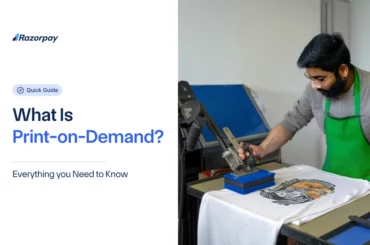Whether you sell a product or service, the pricing strategy determines overall profitability. Every business has a set of financial goals, and pricing strategies can make or break your brand. 41% of online shoppers look to find discount coupons, while 23% of those consumers participate in these promotions.
The right pricing strategies require careful thought and execution, guaranteeing a unique value proposition for buyers. At the same time, you cannot sacrifice your profit margin. There aren’t any universal ideas about how certain products or services are priced. But there are fundamental approaches to creating pricing strategies for your business.
In this article, we’re going to cover examples of pricing strategies employed by top businesses and brands. This guide will inform you of pricing strategies that have worked and continue to work in the modern business ecosystem. But first, let’s explore a bit more about pricing strategy.
What is a pricing strategy?
Pricing strategies are the methods or steps taken by a business to determine how much to charge consumers for goods or services. A pricing strategy accounts for every step of the buyer journey and the decisions they make to consider your brand. To develop a great strategy, you require in-depth market research, consumer data collection, and product testing plans.
Not all pricing strategies are well-defined. Some businesses use cost-plus pricing, while some manufacturers use MRPs. However, building a pricing strategy should always account for market conditions, buyer behavior, and the unique value that you offer to consumers. You have to take competitive advantage of the industry by studying other similar goods and services and how they achieve the best results.
Arriving at a pricing strategy
60% of consumers consider pricing as the very first criteria of their purchase decisions. Besides offering an insight into the product, your pricing strategy also defines the target consumer demographics. For consumers, they get a chance to compare different prices before making an online purchase.
With the growth of e-commerce, pricing strategies are becoming more competitive. It is important to remember that consumers will always seek the best value in the market. A pricing strategy will determine the value generated by a brand through its offering to customers. If your pricing strategy is well-researched, your competitors will also react to the decisions your business made.
When arriving at a pricing strategy, you must fully understand the demand elasticity. This means how well your product performs in the event of a price change. You can set the price higher or lower, depending on the nature of demand and the competition in the market.
As you refine your strategy, you can create a niche in the market for a product that continues to sell well. You can utilize pricing strategies to convert the most price-sensitive consumers. Paired with an exceptional marketing knack, your business can utilize pricing strategies to modify the perceived value of your products or services.
Hence, a pricing strategy determines a product’s movement in the market. A pricing strategy also influences the value perception among consumers, thus becoming a powerful marketing tool.
By learning about pricing strategies used by successful businesses, you can begin to chart the course of your unique value proposition. 86% of consumers say that it’s important to compare prices from different sellers. Remember, there’s no one-size-fits-all for pricing strategies, but there are competitive rates in the market to consider.
Let’s take a look at examples of pricing strategies.
Examples of pricing strategies
Price skimming strategies
This is the process of launching your business offering at a premium rate before gradually reducing the prices as time progresses. This is an effective method of attracting high-income shoppers who often consider themselves trendsetters or early adopters.
As a business owner, price-skimming can be advantageous to breaking even faster. The reason many businesses choose this strategy is to guarantee a high revenue on each product sold before it becomes more accessible in the market.
The key is to avoid extreme pricing, to ensure that buyers aren’t hesitant to try out the goods. Through effective online reputation management, you can ensure that B2C relations are nurtured.
For example, fashion retailers, mobile phones, and video game consoles often price their products higher initially to get the product moving and reach a break-even point faster. Then they drop the price to continue selling accessories and other branded items in an established market.
Penetration pricing strategies
Penetration pricing strategies are exactly the opposite of price skimming. Instead of launching a product or service at high prices, you begin with low prices. Eventually, as the product gains demand in the market, the prices can go up.
By that time, a vast consumer share is already acquired by your brand. While the risk involved is generating close to zero profit initially, if your product offers uncompromised value, more people will continue to buy.
Penetration pricing strategies are widely used by food & beverage companies, restaurants, or even vendors in your local neighborhood. They start with a flavorsome dish available at low prices and gradually increase the price as more people consume their food. Once they have achieved market penetration, their pricing strategy is guaranteed to generate a higher ROI.
Competitive pricing strategies
As the name suggests, competitive pricing is meant to drive consumers away from competitors and towards your unique brand offering. Instead of increasing the prices later on, like penetration pricing, the competitive pricing model continues to adapt according to the change in competitor pricing strategies. 26% of businesses consider the competition of the market when setting their prices.
For example, supermarkets like D-Mart, Big Bazaar, and Lulu Hypermarket constantly offer discounts, coupons, and offers to attract customers. They often offer price matching services to lure a competitor’s consumer share.
Although this strategy is hard to sustain, competitive pricing strategies can benefit wholesalers and manufacturers who can limit production costs and streamline their supply chain. That way, they can maintain competitive prices and retain customers. Economy pricing is closely related to competitive pricing and relies on lowering production costs to lower prices, regardless of their competitor’s pricing strategy. It’s a great way to move your goods faster.
Premium pricing
Premium pricing strategies aren’t always a consumer’s favorite. However, when consumers seek quality over a lucrative price, this may work well. A premium pricing strategy is a way to nurture the perceived value of your product or services by starting at a premium price. This form of pricing creates a sense of exclusivity for your brand.
Paired with exceptional value-added perks, more consumers will begin to wish to have your product even if they can’t afford it at this moment. That’s because high-income shoppers will share their experiences of landing quality items for a premium rate.
Did you know?
Retail giants change their prices every 3 minutes on average. That’s all the more reason to research before you set the pricing on goods or services.
Commonly used in the luxury market, cars by Mercedes Benz utilize this approach. While they may combine competitive pricing strategies with their premium pricing plan, depending on the market, they are known for their exquisite collection of cars.
Another example would be Gucci, a fashion brand endorsed by celebrities, which makes their premium strategy a trusted one over many other brands in the same niche. The biggest advantage of a premium pricing strategy is that it returns a higher revenue than production costs over a short duration. But, the promise of quality must be delivered.
Pick the right price always
There are numerous other pricing strategies like psychological pricing, based on the behavior of shoppers, or value pricing, based on the unique ingredients or components of a product, or loss leader pricing, based on making customers purchase more products, each for a lower price.
Depending on your market niche, you can employ one or more combinations of pricing strategies that can work for your unique selling point. The only consistency is to maintain a healthy relationship with consumers by matching up to the price markup. Using a logical approach to mark prices, you can maximize profits and sales. When you understand consumer trends better, you can eventually employ more pricing strategies and marketing tools to encourage more purchases.
Since most consumers always pick the right price, every business should set the right price based on solid results and valuable market insights. The core of good pricing is to learn the customer experience and adapt accordingly. Once a customer perceives value in your product or services, you must continue to offer the best value for their money.




![GST State Code List & Jurisdiction 2025 [Updated List] GST State Codes](https://d6xcmfyh68wv8.cloudfront.net/learn-content/uploads/2024/02/GST-State-Codes-370x245.webp)
